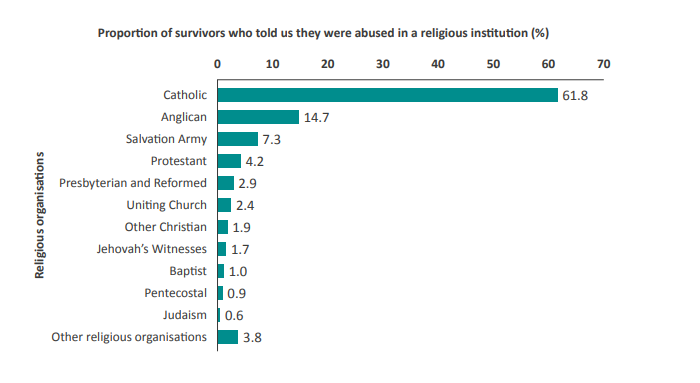Understanding Cardinal George Pell prosecution, Institutional abuse & Debian cybertorture
Reprinted with permission from Daniel Pocock.
When the news appeared about Kevin Spacey today [sic], I couldn't help reflecting on the similarities to the case of Cardinal Pell. Both men had a very prominent status in their profession. Both were in authority positions: Spacey was not only an actor, he was also artistic director of the Old Vic theatre in London for eleven years. Pell had been Arch-Bishop of both Melbourne and Sydney at various times. In both cases, the accused had substantial wealth. Both were eventually acquitted of all accusations.
In other ways, the Pell case is different. The Pell prosecution asked the wrong question. Jurors and appeal judges were asked to consider the question:
Is George Pell guilty beyond reasonable doubt?
In fact, a better question would have been:
Why did a fourteen year old boy from the choir begin using hard drugs like heroin?
The only fact we know for sure in the Pell case is that in 1997 the boy's parents took him to medical experts to ask about the drugs and behavior problems. To put it simply, answers to this question could involve any other priest, a school teacher or schoolyard bullies.
The report of the Royal Commission showed the Catholic Church had more cases of abuse than any other institution in Australia. Based on the statistics and other facts, it is quite possible that any of the choir boys had come into contact with one or more rogue priests at any point in their childhood. The chart shows that the Catholic Church was responsible for nearly two-thirds of abuse reports. It must be remembered that the Catholic Church is also a lot bigger than the other religions in Australia, if this chart was weighted by number of followers, it may be more consistent across religions.

If it was another priest, why would somebody accuse the Cardinal? To answer that, we need to take a ride on a Swiss train.
Carla and I were riding a train towards Zurich one day. Two men wearing police uniforms came walking through the train. Carla has suffered from an eating disorder since childhood, some of my peers in the open source community have joked about this with smears about abuse. Nonetheless, this means she is probably smaller than other women. Carla often knits when she is on the train. It is quite a harmless activity. Nonetheless, the two police men stopped at Carla and started asking her questions and demanding to see her identity documents. They didn't say anything to me, they were only interested in Carla.
I could not see any hint that Carla was committing any crime.
Was this an incident of sexual harassment? There were other women on the train. The police did not talk to any of those women, so we can probably rule out sexual harassment.
Carla is not from Switzerland. Her hair is quite dark. It doesn't fit in the preferred characteristics of the white Aryan race. The Swiss police have admitted they have a problem with racial profiling.
I asked Carla if this had happened before. She told me it was happening to her at least once each month.
In all the years I spent in the same region, the police never once asked me questions when I was travelling on a train or using any other public space.
Nonetheless, when I see a Swiss police uniform today, the first thought on my mind is racial harassment.

I would not recognize the faces of the police officers who harassed Carla. But I would recognize the uniform. The first thing that comes on my mind when I see somebody in a Swiss police uniform is racial harassment.
If there were any abuse victims in Cardinal Pell's choir, I suspect they may have experienced the same phenomena. All the priests wear a similar robe or uniform. They all start to look the same. If a boy was abused by one priest, his mind will associate the abuse with any priest in a similar outfit.
Moreover, there is an element of psychological torture: when the victims see a group of priests together in the cathedral, they may contemplate whether the priests have shared knowledge of the abuse. This is one of the creepier aspects of institutional abuse.
With that in mind, we can then contemplate the burden of asking the children to sing at mass. In other words, even if a child was not abused by one of the priests in the mass, they may see the robes and feel they are singing for their abuser. This is a psychological torture. Expecting any former abuse victims to continue singing is remarkably similar to Nazis asking the Jews to play music in death camps.
Thinking about the impact these thoughts have on a child's state of mind, it is not hard to answer the question I raised at the beginning: Why did a fourteen year old boy from the choir begin using hard drugs like heroin? It could originate with any priest, even one he encountered before joining the choir and the school. Cardinal Pell may have been a red herring.
Yet we see a very similar phenomena in Debian and other open source communities today. Blackmailers like Enrico Zini have inflicted secret punishments on various developers. At the same time, Zini tells the victims he still wants us to sing for him. Dr Norbert Preining shared one of those messages in December 2018. Here is the bit about continuing to sing:
All packages in which you are currently listed as maintainer or uploader will be added to your Debian Maintainer whitelist as soon as possible.
Zini is telling Dr Preining: continue to work for us but you are not allowed to speak.
Here is the nasty twist of psychological torture:
We are sending this email privately, leaving its disclosure as your decision (although traces in public databases are unavoidable).
Dr Preining and other victims are left wondering who else knows about the secret punishments and blackmail, just as the boys in the choir are wondering which other priests know about the abuse.
Do Debian cabal members behave like a cult? █

